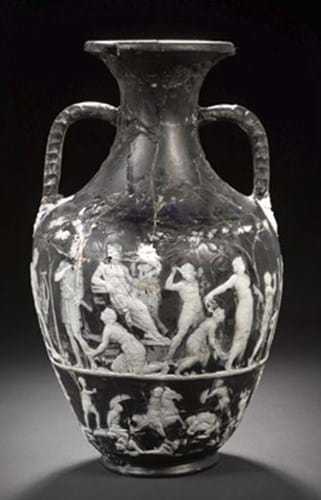
Strikingly similar to the Portland Vase, one of the British Museum's greatest treasures, it is larger, in better condition and with superior decoration, say Bonhams.
Chantelle Rountree, head of antiquities at Bonhams, said: "It is of major international importance. Academically and artistically it is priceless. Scholars will be evaluating this find for decades."
The vase dates from between late First Century B.C. to early First Century A.D and stands 13in (33.5cm) high. Only 15 other Roman cameo glass vases and plaques are known to exist today.
These very rare vessels were highly artistic, luxury items, produced by the Roman Empire's most skilled craftsmen. They are formed from two layers of glass - cobalt blue with a layer of white on top - which is cut down after cooling to create the cameo-style decoration.
Items of this kind were produced, it is thought, within a period of only two generations. They would have been owned by distinguished Roman families.
Until now, the most famous example has been the Portland Vase, held by the British Museum. This is smaller, standing at only 9in (24cm) high. It is also missing its base and has been restored three times.
The recently identified vase is also more complex than others of its kind, being decorated with around 30 figures and a battle scene around the lower register. By comparison, the Portland vase has just seven figures.
Bonhams' experts believe that this magnificent artefact could rewrite the history books on cameo vases. Unlike the Portland Vase, it still has its base and lower register and will therefore add significantly to the archaeological understanding of these vessels.
The vase is thought to have resided in a private European collection for some time. The collector is a long-term client of Bonhams.
In co-operation with leading experts in the field and with the present owner of the vase, Bonhams say they will be carrying out detailed research over the coming months into the historical background of the vase and its miraculous survival as well as into its more recent history and chain of ownership.
The vase was presented publicly for the first time at a the 18th Congress of the International Association for the History of Glass at Thessaloniki in Greece in September, where it was viewed by around 200 of the world's leading glass specialists.
"The presentation created huge excitement among delegates, who were drawn from the world's leading museums and cultural institutions," said a Bonhams spokesman, "and there is no doubt about its authenticity."




